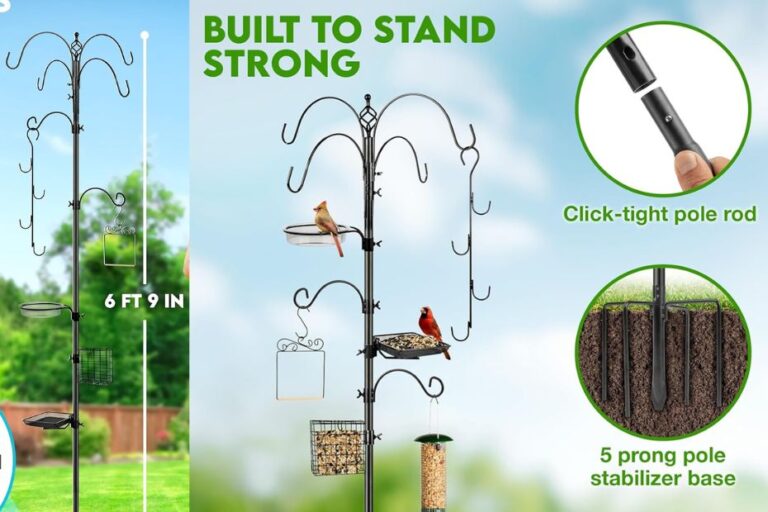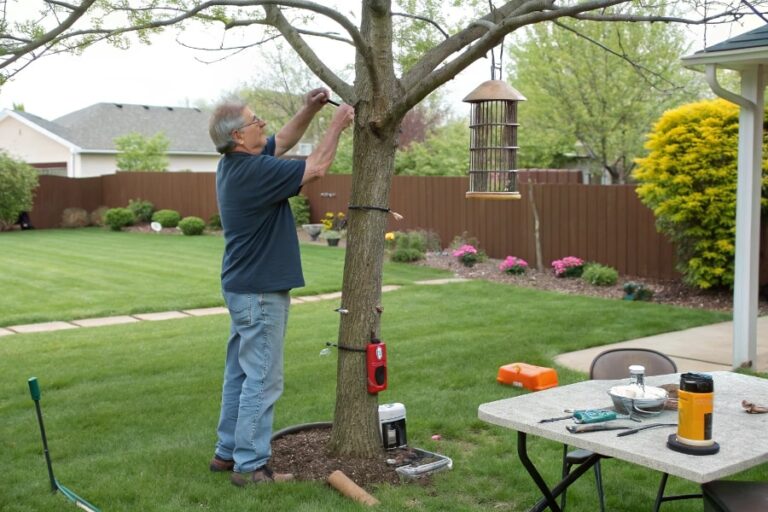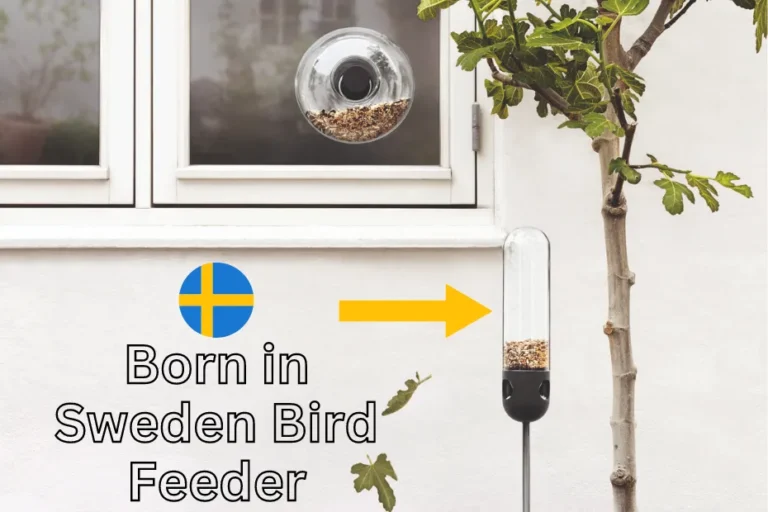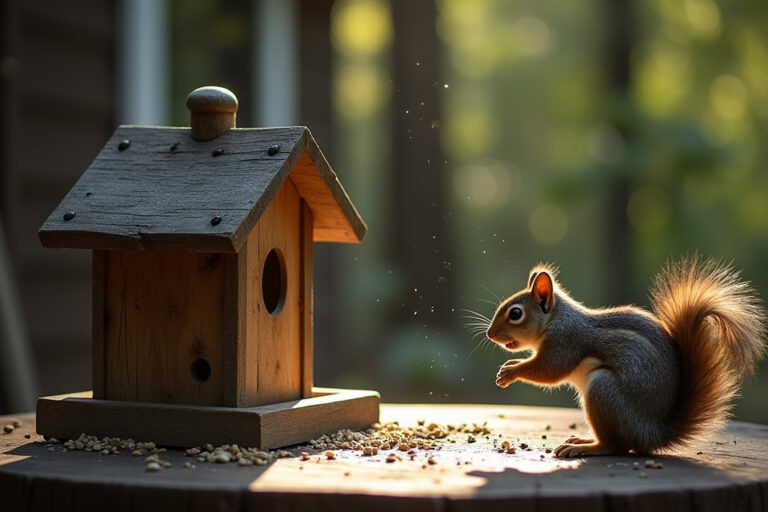4 Proven Tips to Humanely Deter Hawks from Your Yard Today
Learn how to humanely deter hawks from your yard. Use strategic landscaping, visual tricks, and a deeper understanding of hawk habits to protect your pets and birds.
Hawks are a sign of a healthy ecosystem. Their presence means a thriving environment, but when they start to frequent our personal spaces, it can become a source of concern.
Table of Contents
Introduction to Hawk Deterrence
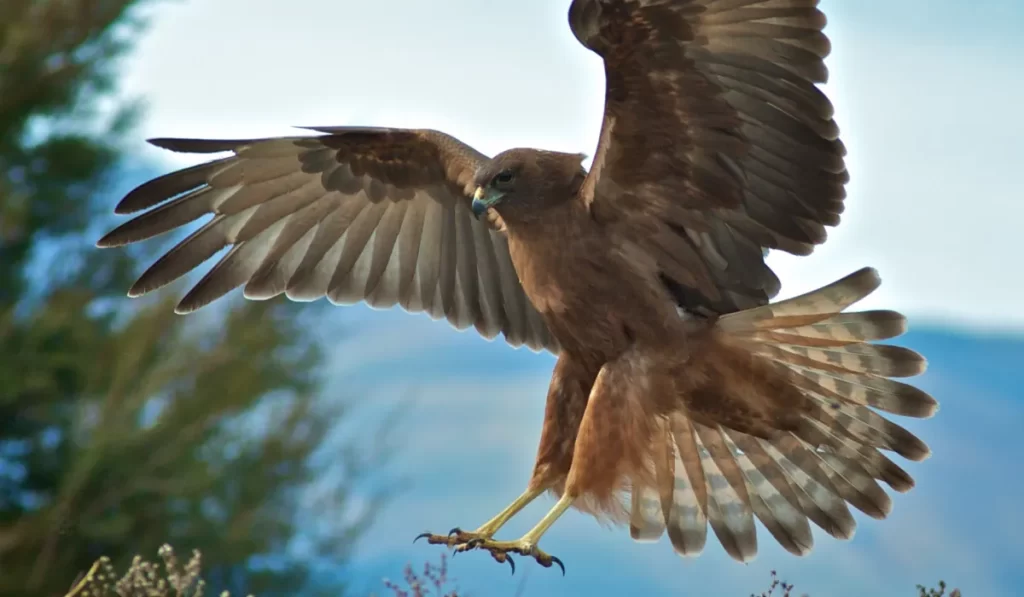
While our instinct might be to “get rid” of them, the more effective and ethical approach is to make our yards a less appealing place for them to hunt. This guide is a roadmap to doing just that, with an emphasis on safe and lasting solutions.
Part 1: Understanding Your Adversary
To effectively deter hawks, you need to think like one. Hawks are not malicious; they are simply following their powerful hunting instincts. Understanding how they operate, you can create a strategy that works with, not against, nature.
The Hawk’s Hunting Mindset:
- A Master of Observation: Hawks, especially common residential species like the Cooper’s Hawk and the Red-tailed Hawk, are primarily “perch-and-pounce” predators. They will sit on a high, silent perch—like a tall tree branch, a fence post, or even a rooftop—and patiently scan for prey.
- The Power of Surprise: Their hunting strategy is built on surprise. They use their incredible eyesight to spot a target from a distance and then swoop down with breathtaking speed. They are most successful when they can hunt undetected.
- The Lure of Easy Prey: A hawk is always looking for the easiest meal. A lone bird at a feeder, a free-roaming pet, or a vulnerable chicken is an irresistible target. Your goal is to make your yard feel like a high-risk, low-reward hunting ground.
Common Hawks You Might Encounter:
- The Cooper’s Hawk: Often called the “chicken hawk,” this hawk is a frequent visitor to suburban yards. They are swift and agile, able to maneuver through dense trees in pursuit of songbirds and small chickens. Their long tails and rounded wings are key identifiers.
- The Red-tailed Hawk: These are the largest and most common hawks you’ll see soaring high in the sky. They prefer open spaces and are known for their high-soaring hunting style. They have a distinctive broad, rounded tail, which is a rusty red in adults. Their classic “keee-eeeer” call is often used in movies and television shows.
Part 2: The Core Strategies: Making Your Yard a “No-Fly Zone”
Instead of focusing on “getting rid of” a hawk, our goal is to create an environment so unappealing to them that they choose to hunt elsewhere. This is the foundation of a humane and effective long-term solution.
1. Strategic Environmental Modification and Landscaping This is the most powerful and permanent solution you can implement. It involves changing the very layout of your yard to disrupt a hawk’s hunting patterns.
- Remove Perch Sites: Hawks need high vantage points to hunt. Identify and remove any dead branches or tall, isolated trees near your feeders, coops, or other vulnerable areas. If you can, cap utility poles with sheet metal cones to prevent them from perching.
- Create Safe Havens: Give smaller birds and animals a place to hide. Plant dense, protective vegetation like thorny bushes (hawthorn, holly, barberry) where smaller birds can seek refuge. A hawk will not risk injury trying to fly into a dense, thorny bush.
- Design a “Cluttered” Yard: Hawks prefer open, easy-to-navigate spaces. By adding arbors, trellises, or other overhead structures, you can break up the open sky, making it harder for a hawk to make a clean, unobstructed dive.
2. Visual Deterrents: The Power of Deception Hawks have incredible vision, and you can use that against them. The key is to create a sense of unease and unpredictability.
- Reflective and Shiny Objects: The flash of reflected light is a hawk’s worst nightmare. Hang old CDs, reflective streamers, or specially-made Mylar tape from branches or wires. The constant, random flashes of light confuse and startle the hawk, making it feel unsafe to hunt.
- “Scare Eye” Balloons and Decoys: These devices are designed to mimic the eyes of a larger predator, but they must be used correctly. A stationary decoy will quickly be recognized as a fake. To be effective, you need to move it regularly—at least every few days—and ensure it moves in the wind.
- DIY Wind Chimes: Anything that moves and makes a metallic sound can be a deterrent. You can make your own by stringing together old soda cans or pie plates. The combination of sound and light is a potent disincentive.
Part 3: Advanced and Specialized Tips
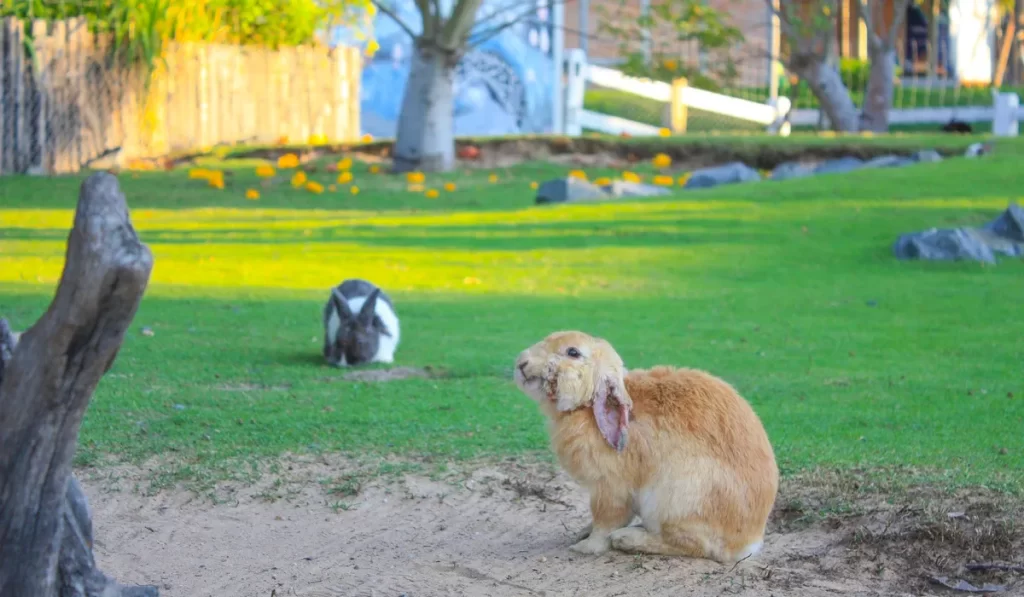
Beyond the basics, here are some additional tips for specific situations, particularly for those with pets or chickens.
1. For Protecting Your Backyard Flock (Chickens, Ducks, etc.) A chicken run is the most effective and humane way to protect your flock.
- The Importance of a Covered Run: The single best defense is a covered enclosure or run. Use sturdy bird netting or hardware cloth to create a physical barrier over the entire top of the run. This completely eliminates a hawk’s ability to swoop down from above.
- Mobile Coops (Chicken Tractors): If you use a mobile coop, make sure it has a roof and solid sides. This design provides both safety and the ability to give your flock fresh ground to roam on while staying protected.
- Add a Roosters and Black Chickens: Some poultry keepers swear by having a rooster, as they are naturally vigilant and will make a loud alarm call when a hawk is nearby. There’s also anecdotal evidence that a black chicken in a flock can act as a deterrent, as they can sometimes be confused for crows, which are natural enemies of hawks.
2. For Protecting Small Pets (Cats, Small Dogs, etc.) While less common, hawks can sometimes prey on small pets. The best defense is simple and consistent vigilance.
- Never Leave Pets Unattended: A free-roaming cat or small dog is an easy target. Always supervise your pets when they are outdoors, especially in yards with a lot of open space.
- Use a “Catio” or a Secure Run: If you have an indoor cat that you want to give outdoor time, consider building or purchasing a “catio” or a secure, fenced enclosure. This allows them to enjoy the outdoors without the risk of an aerial attack.
Read More: How Do Birds Survive in the Desert?
Part 4: Ethical, Legal, and Expert Considerations
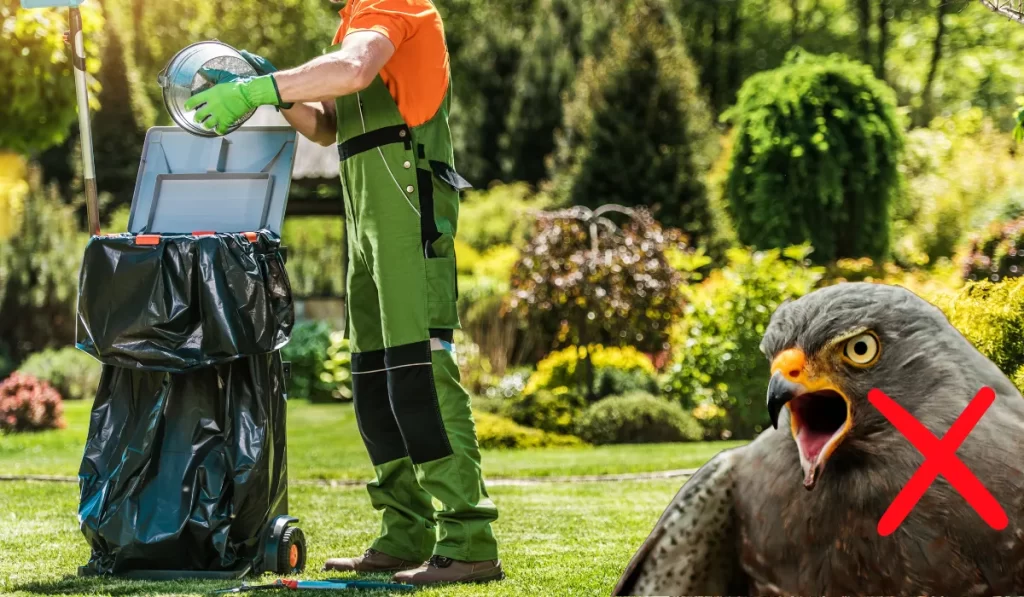
When dealing with any wildlife, it’s crucial to act responsibly and ethically.
Listen to the Experts: Ornithologists and wildlife experts agree that habitat modification is the most sustainable and humane solution. By providing more cover and reducing easy hunting opportunities, you are working with nature, not against it.
Legal Protections: In the United States and many other countries, all hawks are protected under federal laws like the Migratory Bird Treaty Act. It is illegal to harm, trap, or kill a hawk. The goal must always be to deter them without causing them any harm.
The Goal is Deterrence, Not Removal: A hawk is not a pest to be exterminated. It is a part of the natural world. Our goal is to make our yard unappealing to them, encouraging them to hunt in the wilderness where they belong.
FAQs About How To Keep Hawks Away from Your Yard
What are some effective ways to deter hawks from my yard?
You can use visual deterrents like decoys (fake owls or scarecrows) and reflective objects, or auditory deterrents like noise-making devices. Keeping your yard free of food sources that attract hawks, such as small rodents or birds, is also helpful.
Can I use noise to keep hawks away?
Yes, noise deterrents can be effective. Hawks don’t like loud, unexpected sounds. However, it’s important to use them sparingly to avoid disturbing your neighbors and other wildlife
Are there any legal considerations I should be aware of when trying to keep hawks away?
Absolutely. Hawks are protected by federal laws, so it’s crucial to use non-lethal methods to deter them. This means you cannot harm or kill hawks and should focus on prevention and deterrence strategies1.
How can I protect my pets from hawks?
A4: Keep small pets indoors or supervise them when outside. For outdoor pets, provide covered shelters or enclosures. Avoid leaving pet food outside, as it can attract hawks looking for an easy meal.
Conclusion: Creating a Balanced Approach to Hawk Deterrence
Effective hawk deterrence requires a multifaceted approach that considers the legal protections for these birds, their ecological importance, and the potential risks they pose to pets and livestock.
By combining various deterrence methods, such as visual deterrents, landscaping techniques, and responsible use of auditory deterrents, homeowners can create a balanced approach that discourages hawk activity while respecting these majestic raptors.


